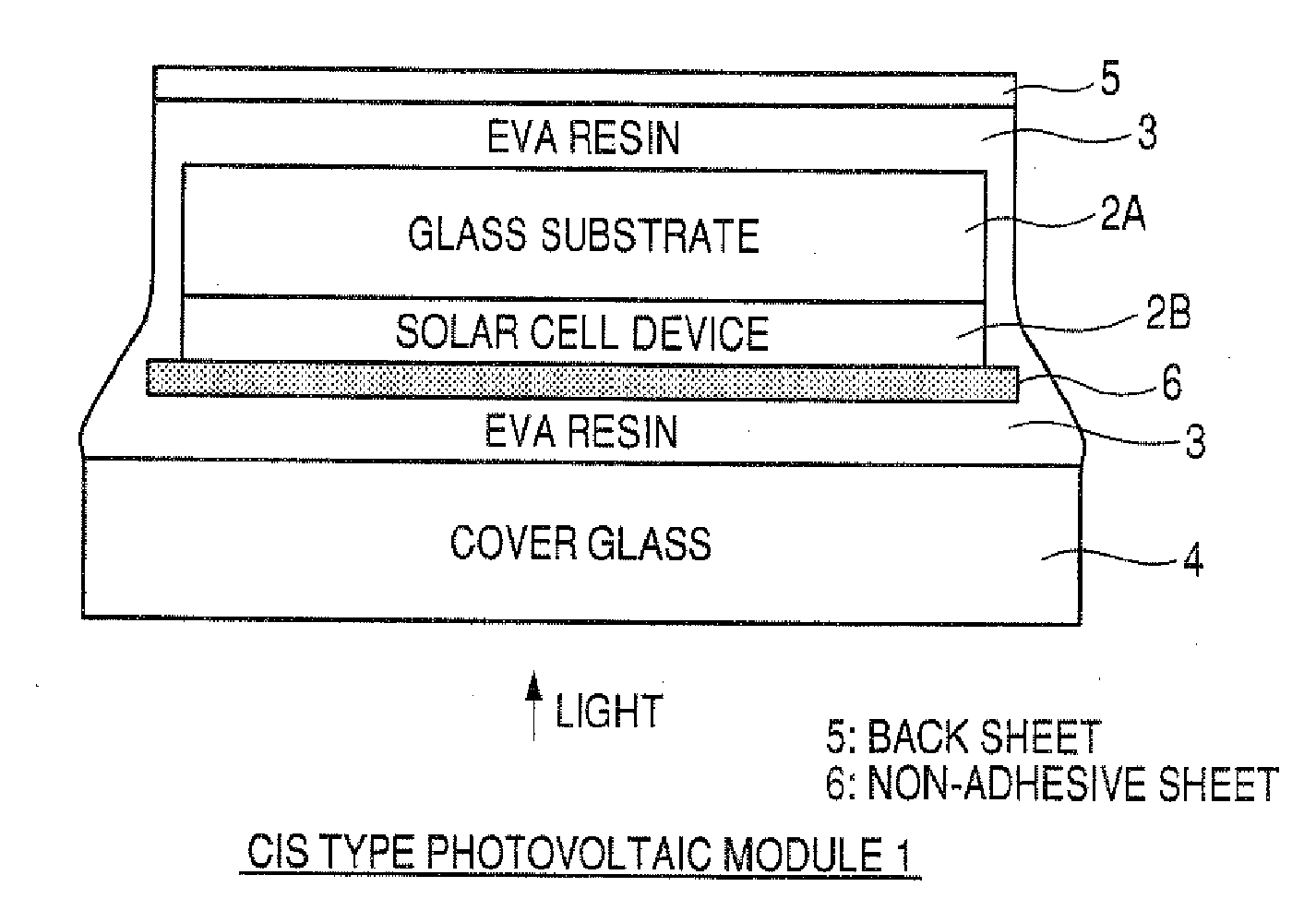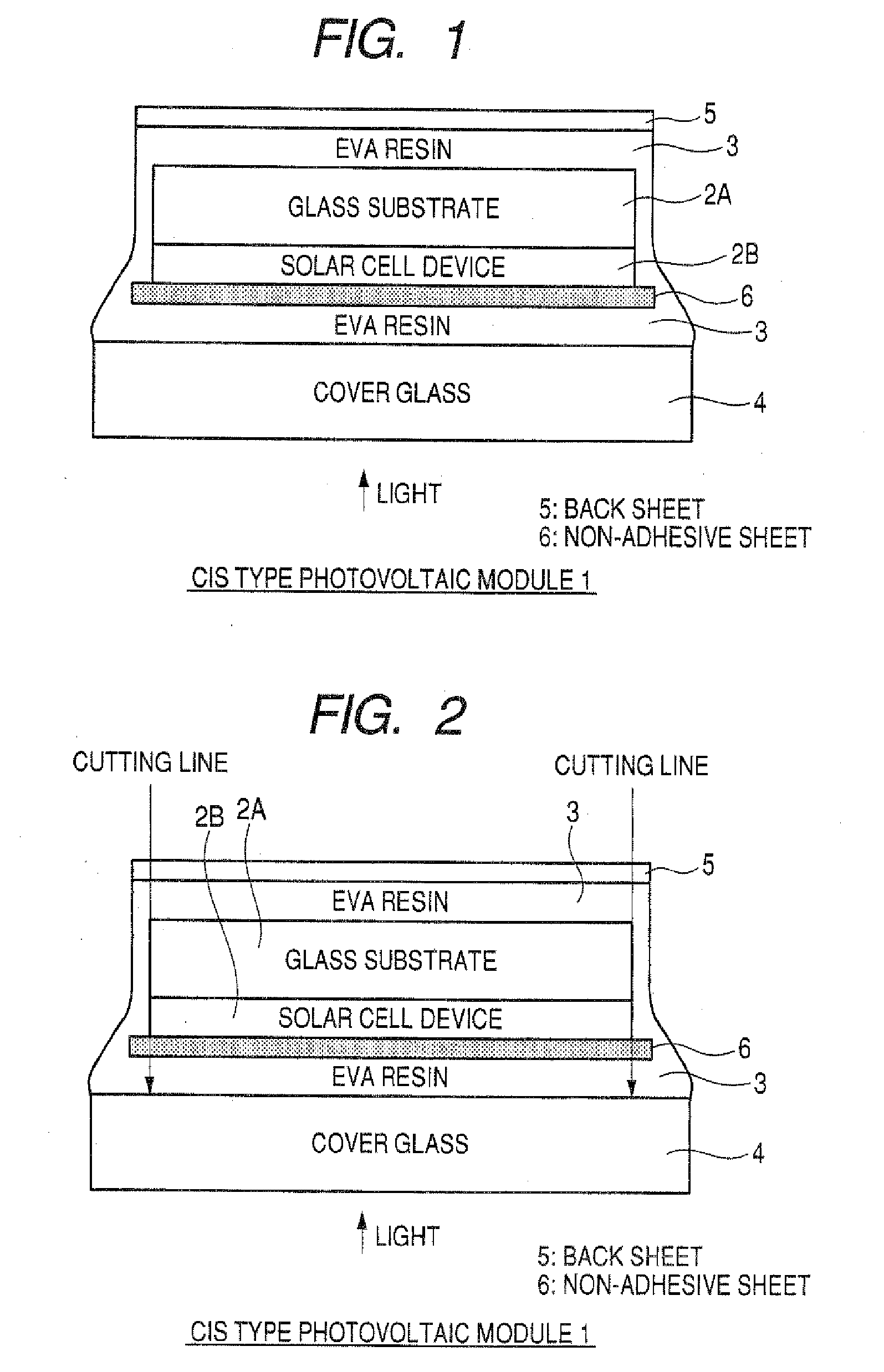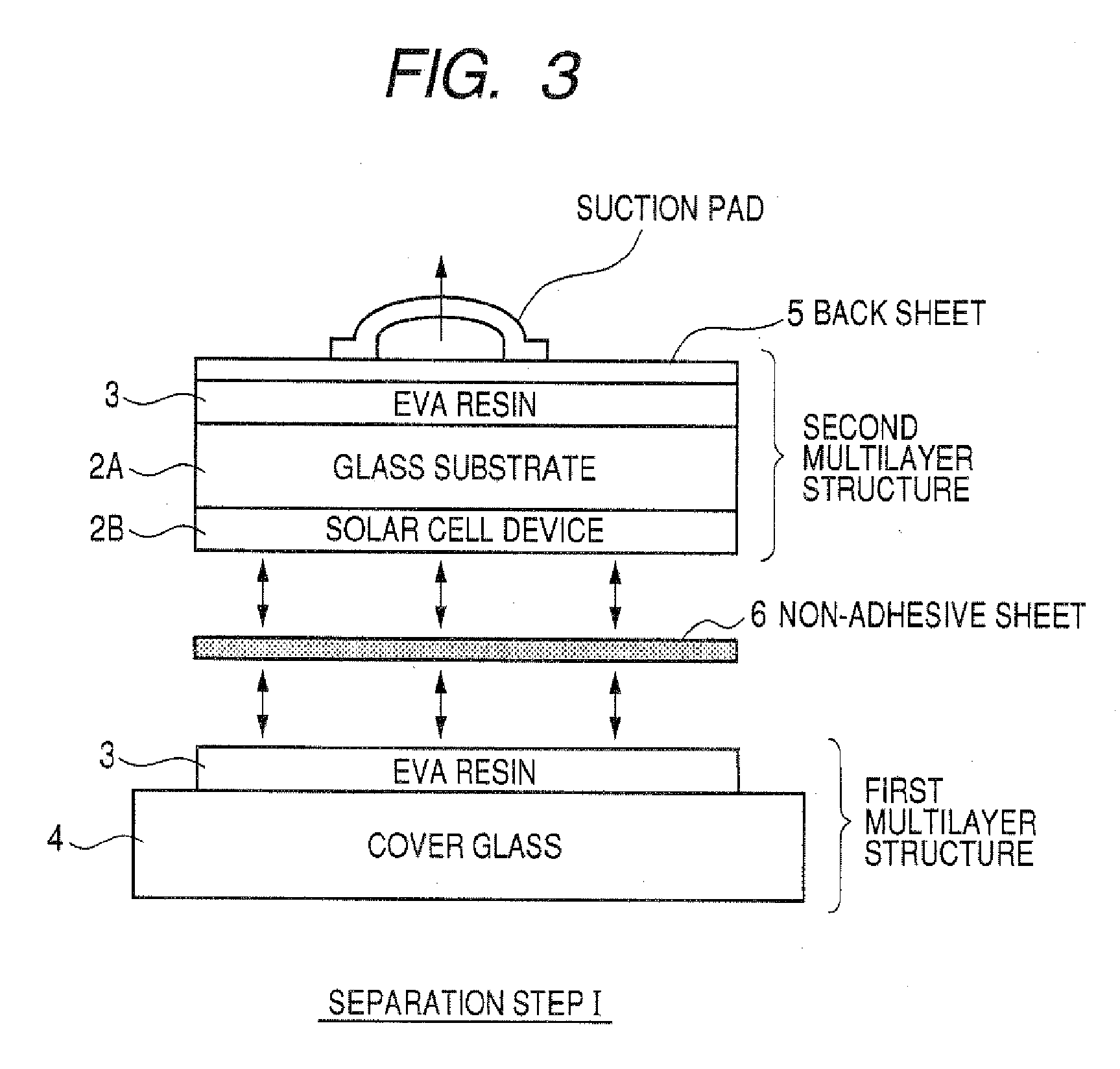Cis Type Thin-Film Photovoltaic Module, Process for Producing the Photovoltaic Module, and Method of Separating the Module
a technology of photovoltaic modules and thin films, applied in the direction of sustainable manufacturing/processing, final product manufacturing, synthetic resin layered products, etc., can solve the problems of increased number of production steps, complex process, and loss of output, and achieve the effect of reducing the output characteristics and durability of solar cells
- Summary
- Abstract
- Description
- Claims
- Application Information
AI Technical Summary
Benefits of technology
Problems solved by technology
Method used
Image
Examples
Embodiment Construction
[0025]The invention provides a CIS type thin-film photovoltaic module which can be easily recycled, a process for producing the photovoltaic module, and a method of separating the module. As shown in FIG. 1, the CIS type thin-film photovoltaic module 1 has a structure which comprises a glass substrate 2A, a CIS type thin-film solar cell device 1 comprising superposed thin layers each formed on the glass substrate 2A, a cover glass 4 bonded to the light incidence side of the solar cell device 1 with a thermally crosslinked ethylene / vinyl acetate (EVA) resin (or a resin other than the EVA resin) 3 as an adhesive, and a back sheet 5 bonded to the back side of the glass substrate 2A, i.e., the side opposite to the light incidence side, with a thermally crosslinked EVA resin 3 as an adhesive, and which further includes a non-adhesive plastic resin 6 sandwiched between the CIS type thin-film solar cell device 2 and the EVA resin 3. Due to this structure, the constituent materials can be e...
PUM
| Property | Measurement | Unit |
|---|---|---|
| temperature | aaaaa | aaaaa |
| transparency | aaaaa | aaaaa |
| resistance | aaaaa | aaaaa |
Abstract
Description
Claims
Application Information
 Login to View More
Login to View More - R&D
- Intellectual Property
- Life Sciences
- Materials
- Tech Scout
- Unparalleled Data Quality
- Higher Quality Content
- 60% Fewer Hallucinations
Browse by: Latest US Patents, China's latest patents, Technical Efficacy Thesaurus, Application Domain, Technology Topic, Popular Technical Reports.
© 2025 PatSnap. All rights reserved.Legal|Privacy policy|Modern Slavery Act Transparency Statement|Sitemap|About US| Contact US: help@patsnap.com



